5 strategies for success with real time marketing

Table of contents
Staying relevant has always been a challenge for marketers. As news cycles become shorter and shorter, staying relative becomes harder and harder. Attention spans decrease, and the public becomes desensitized to marketing messages. This means marketers need to up their game. It’s not enough to be fast, sophisticated, or clever. Now, you need to do both. For success with RTM, messages must be clever, on-target, stand out, grab your audience’s attention, and do all that within a very short time frame. Sounds complex?! Let’s see what we can do about that.
Done right, real-time marketing (RTM) captures (and holds) the attention of your target audience. It can piggyback on hot trends – remember the Pokemon Go craze? What about Oreo’s social media team capturing the moment when the lights went out during the 2013 Super Bowl? Those were both successful attention-grabbers in real-time. Actually, the Oreo post was 2 years in the making! It was only a small part of a social media RTM strategy that Oreo had decided to implement. So, when the lights went out during the Superbowl, Oreo had their ducks in a row, ready to pounce.
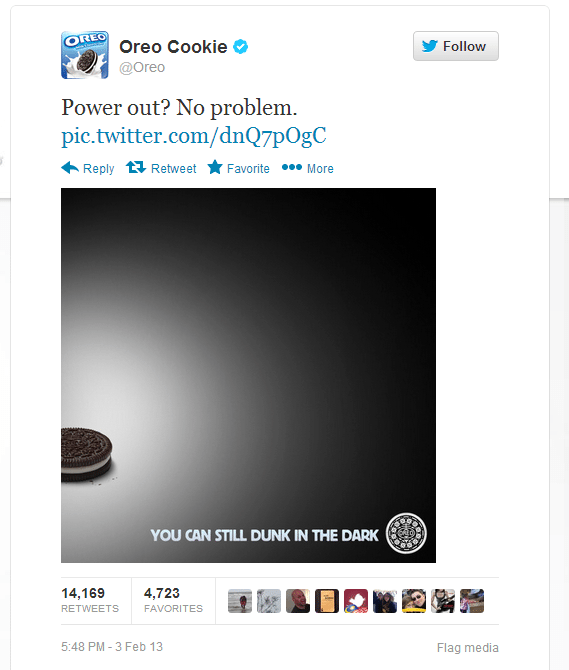
We’ll get back to analyzing specific examples later. In this post, we’ll examine the types of companies that best suit real-time marketing (including B2B) and ways to do this effectively, so you get the most value out of your campaign. But first, let’s define the term real-time marketing.
What is real-time marketing?
Like it sounds, “real-time marketing” is marketing done in real-time. Marketing Land defines it as:
“Real-time marketing or ‘RTM’ moments occur when brands and agency marketers react quickly to local, national or global events happening online or offline, in an effort to interject corporate marketing into consumer conversations via social media messaging or boost brand recognition utilizing marketing platforms.”
The famous Oreo tweet from above is a great example.
However, like any new idea, real-time marketing has matured, and B2B businesses are in an excellent position to incorporate real-time marketing into their marketing strategy. Before we get into more detail with B2B, let’s look at a couple more successful B2C examples.
(Unconventional) examples of real-time marketing done right
Real time marketing shows that you’re aware of what’s going on in the world and gives companies a chance to show a little personality. B2C is rife with great examples of real time marketing.
For example, when fashion brand ASOS had 17,000 bags printed that misspelled “online,” they were quick to point out the mistake and poke a little fun at themselves. They tweeted, “We *may* have just printed 17,000 bags with a typo. We’re calling it a limited edition.” They included a picture of the new bags.
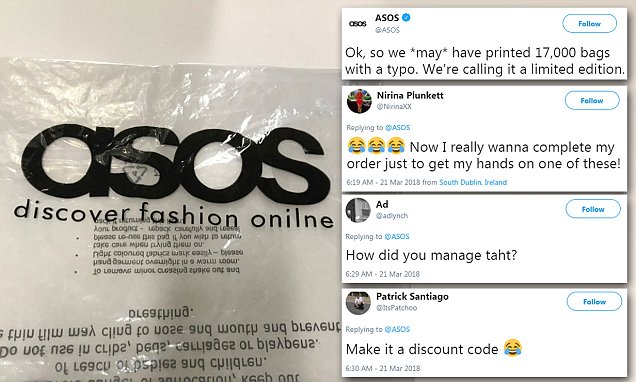
That was a brilliant move because in this era of transparency, it acknowledged the mistake and took ownership of it, turning it into thousands of dollars’ worth of free publicity. From an RTM perspective, this example is unconventional because, unlike most RTM events, the brand, mistakenly, created the real-time event.
The social media discourse could have swayed against ASOS quickly. However, ASOS were quick to react, likely because they had an RTM strategy in place were well experienced in putting their own spin on real-time events. ASOS turned a possible social media disaster into an RTM win.
Another unconventional example is that of Fast-food chain, Wendy’s. Regardless of RTM, Wendy’s is a great example of a brand that is doing social right by being bold, funny, and quick. All important characteristics for real time marketing success. Similarly to ASOS, Wendy’s were responsible for “triggering” their own RTM event. All it took was some quick thinking (and a speedy response). Fan Carter Wilkerson posted, “Yo @Wendys how many retweets for a year of free chicken nuggets?” Wendy’s quickly responded, “18 million.”
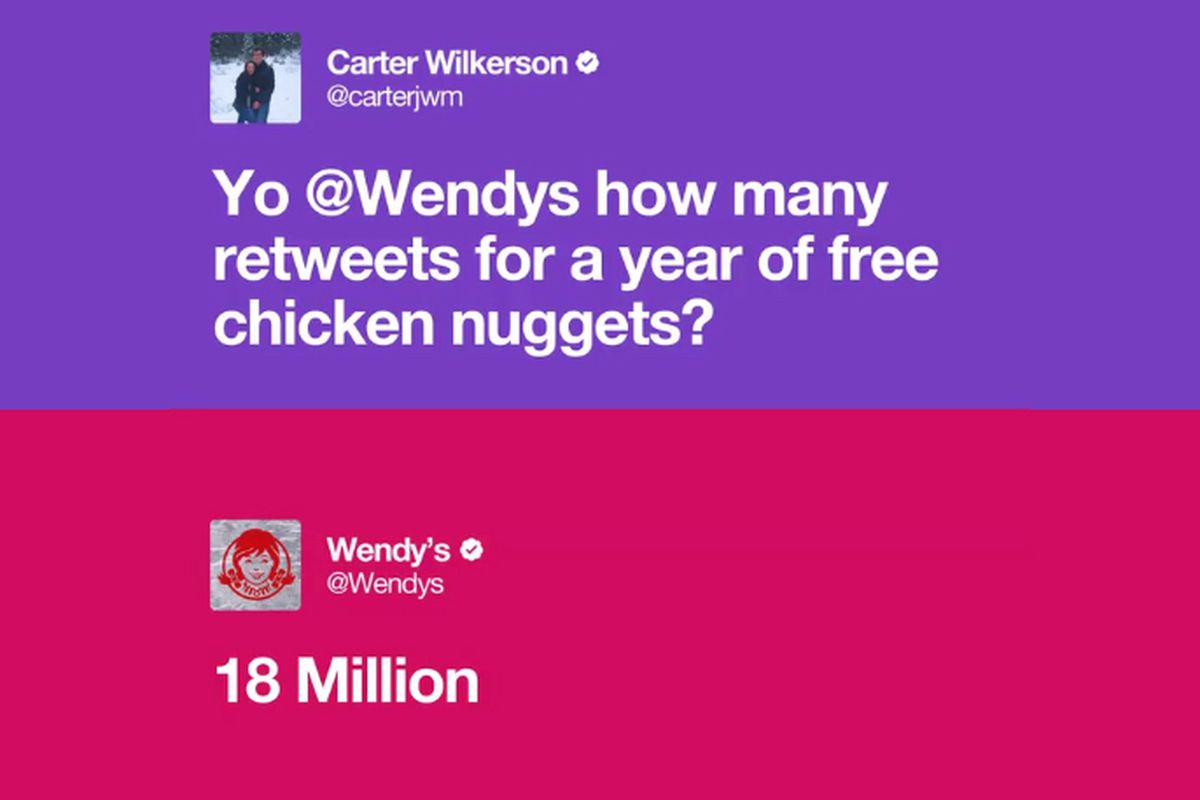
Carter went to work to meet the challenge, and this is where it again gets interesting. Wendy’s created the RTM event but it quickly ballooned beyond the confines of Wendy’s news feed and their followers. Once it was a full-blown RTM event, other brands had the opportunity to jump in and take advantage. Since it was all done for charity it was an additional win-win.
Tip: Note below how Microsoft specifically calls out Amazon and Google. This is the same tactic that made the ice bucket challenge go viral. Use specific “callouts” to make your RTM campaign go viral, one person (and their followers) at a time.
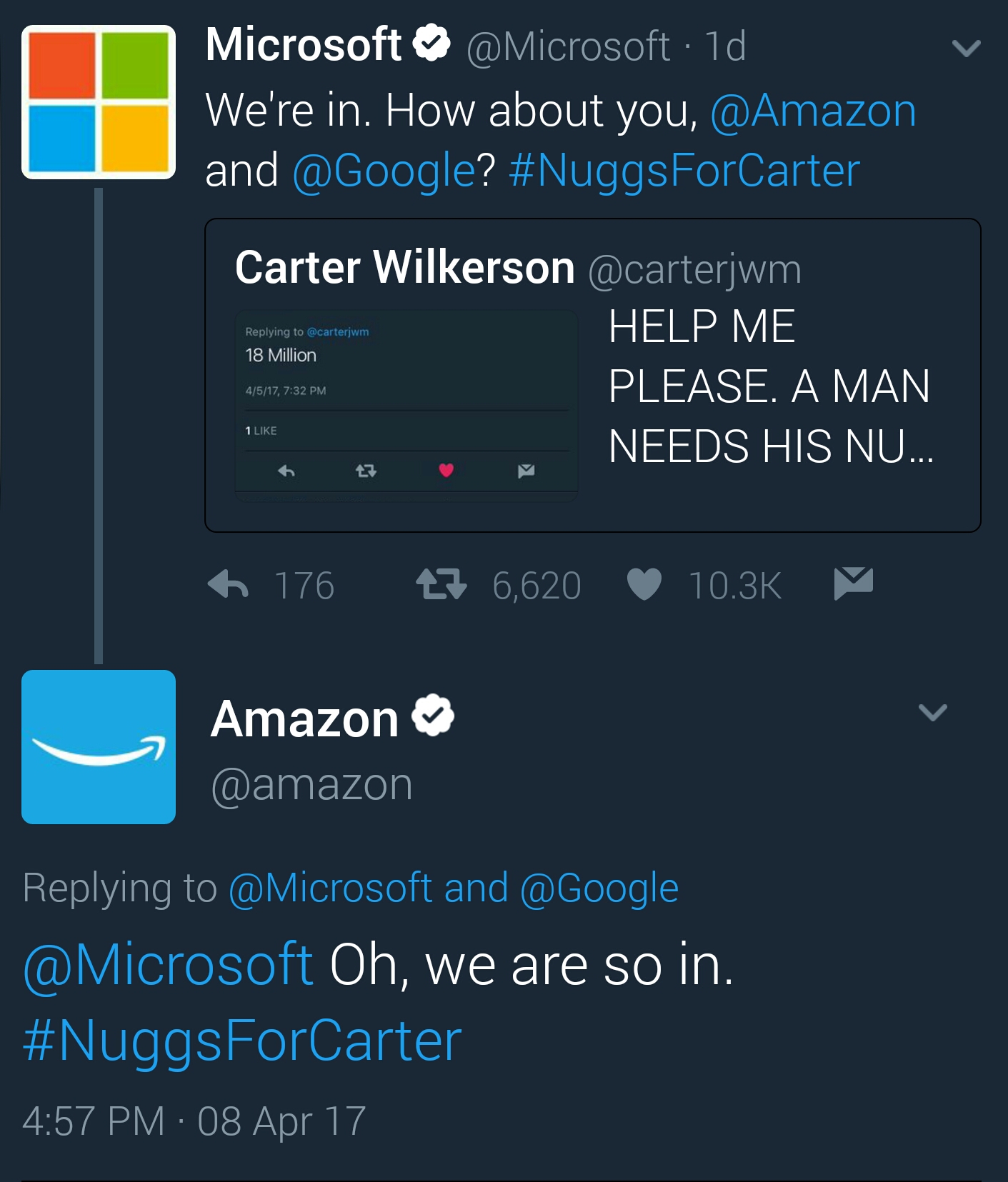
Recommended for further reading
How can B2B marketers incorporate real-time marketing?
Obviously, real-time marketing of consumer products can be highly effective. However, that doesn’t mean B2B marketers shouldn’t consider RTM. If anything, you’re in a more strategic position to benefit because you can go deeper with your customers.
For example, think about the trends and real-time events in your industry. Conferences are real-time events in which you can build a real-time marketing campaign around.
Let’s say that Alphaville was headlining this year’s Pubcon. You could have a social campaign targeting everyone in a five-mile radius of the conference with a message on how your software can help them become “Big in Japan.”
You don’t even need to be a Fortune 500 brand like Microsoft or Google to do it right. Take for example Namogoo, a small but growing B2B startup. Namogoo’s customers are eCommerce companies, and many of them attend ShopTalk. Targeting conference-goers with real-time messaging and “live tweets” from the conference is a great idea and most B2B companies will implement it. But, what about the employees left to hold down the fort. With that in mind, Namogoo targeted employees who didn’t go to Shoptalk.
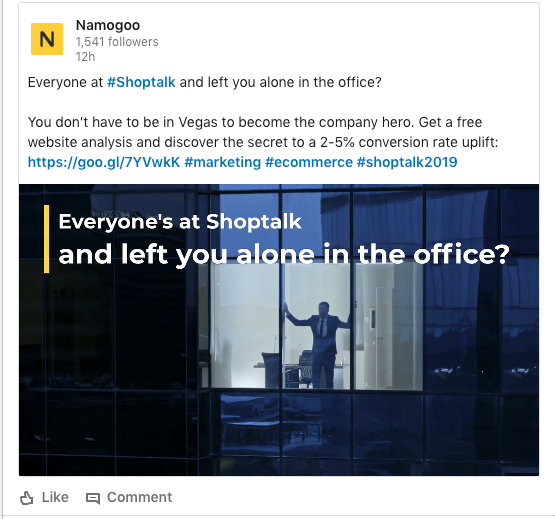
Your data is another avenue that offers insight into your customer’s minds and can help you step into the conversation. When you take the time to look at your analytics on both your website and social media, you can discover a ton of useful information:
- What are the most popular pages on your website?
- How do visitors arrive there?
- At what point do they leave?
- What are the questions your visitors ask?
- How are you answering them?
- Who’s talking about you on social?
- What are they saying?
Social media analytics offers a gold mine of information that you can use to create effective social media and content strategies.
For example, if you offer a webinar, follow up with an email asking if it met their expectations. “Tag” the viewer in your marketing automation and offer follow-up steps. In fact, “remarketing” is an excellent way to go deeper with your potential customers because you can discover buying patterns.
A quick response on social media is important too. If you wait days to respond to a question or complaint, the person has likely moved on. But, if you can respond in real-time, now they feel heard.
As you gather data and review your customer’s path, you’ll discover new ways to engage your customers in real-time, which means you’ll be seen as relevant and helpful by your customers. For example, savvy marketers can use MarTech tools to dial in on buying signals. This allows for greater personalization in the next step of the buyer’s journey. That’s a powerful position for a business.
Here are five marketing tactics to incorporate real-time marketing in your company’s strategy.
5 real-time marketing tactics for B2B marketers
1. Always Be Listening (ABL)
To do real-time marketing right, you need to have your ear to the ground and catch trends as they happen. Here are four ways to do that:
- Set up Google alerts on trends within your industry. What are some of the buzziest topics in your industry? If you’re coming up blank, conference agendas will give you ideas. For example, if you’re in the hotel industry, automation is a big topic. You might put “hotel automation” into your Google alerts and scan them a few times a week to see what’s trending.
- Monitor all real-time events in your industry. What are your competitors doing at industry events? Do they have RTM on their website or social media? Are they remarketing to visitors more than you are so they’re at the top of your mind when your prospect is ready to buy?
- Follow influencers closely and develop relationships with them. They can be advocates of your brand and help publicize your RTM efforts when applicable.
- Follow industry publications and newsletters closely to remain current on trends, as well as common concerns and questions.
2. Resources
Have the resources in place to act quickly. Oreo’s social media team succeeded because they were prepared. When the perfect opportunity appeared, they could pounce on it.
In B2B, monitor industry events, and use creative resources to act on current trends. You’ll also want to use a tool that harnesses maximum ROI from social media. That way, you can keep track of your brand mentions, curate the right type of content for your audience, and make data-driven decisions.
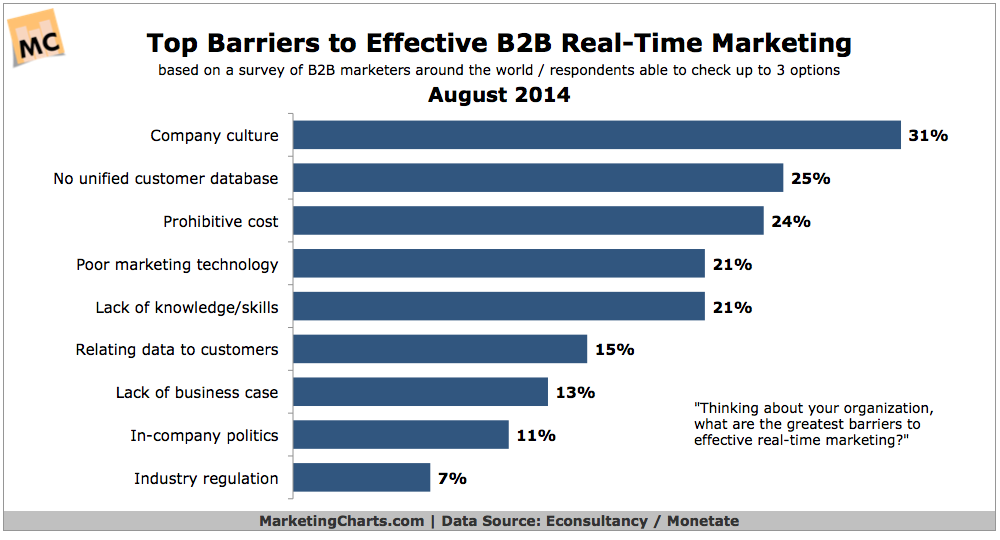
3. Ambassador network
Timing is everything when it comes to real-time marketing and opportunities are short-lived. You’ll need to get the message out quickly before the trend starts pointing downward.
Launching a successful real-time marketing opportunity relies on creative thinking and letting your customers know about your initiative. Tap your employee advocacy programs and social ambassadors to not only let them know about the initiative, but also ask them to share it online, letting their networks know about it. That’s the way to create a maximum B2B marketing impact.
Sometimes, onboarding ambassadors can be the easy part but engaging them and holding on to them over time can be a much bigger challenge. So, remember to reward your ambassadors for their support.
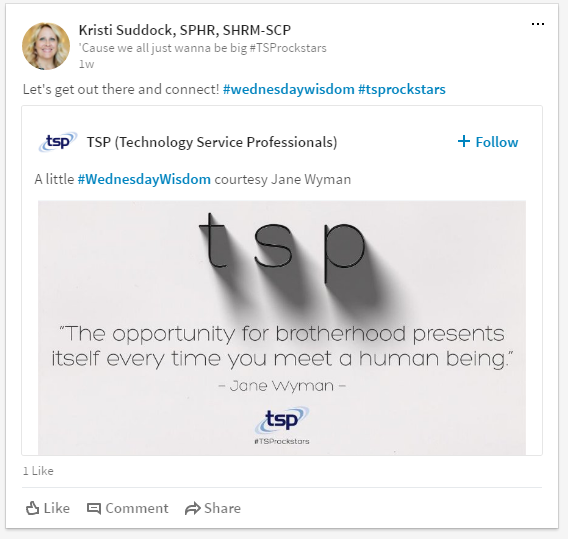
4. Know where the conversation is
For B2C marketers, the conversation is everywhere. But, B2B marketing is a bit more of a challenge. It wouldn’t make any sense for a B2B software company to buy network television ads. But, it does make sense to review industry publications, events, and your data, so you can speak directly to your prospects.
As we mentioned above, understanding your customer’s journey online helps your marketing team get clear on what drives your customer’s buying decisions. That way, your marketing team can create the most relevant content and yes, discover opportunities for real-time marketing efforts.
Imagine an industry trend that your company excels in, yet, many of your customers don’t realize this. This could be an excellent opportunity to launch a campaign that highlights it.
5. Not one and done
Be ready to participate and take part in the conversation, reply, and initiate conversations. If your customers are active on LinkedIn and Twitter, show up and be there. Answer questions, ask questions, be an active part of the conversation so that when they’re ready to buy, you’re the most natural option because you’re already there.
One way you can do this is by participating in industry Twitter chats. If there isn’t one in your space, consider starting one.
Bonus: step outside of your comfort zone
Real time marketing is about having fun, so don’t be afraid to do just that. Businesses that show personality stand out and build strong loyalty. Not only that, but people are individuals, which means when you speak to them like a person instead of like a “corporation,” they appreciate it.
Conclusion
Hopefully, by now you see that the goal of real-time marketing is to join the conversation going on in your customer’s head. When you incorporate current trends and pay attention to your customer’s “next best step,” you’re helping your prospects with useful content and showing your relevance.
What real-time marketing ideas do you have?




